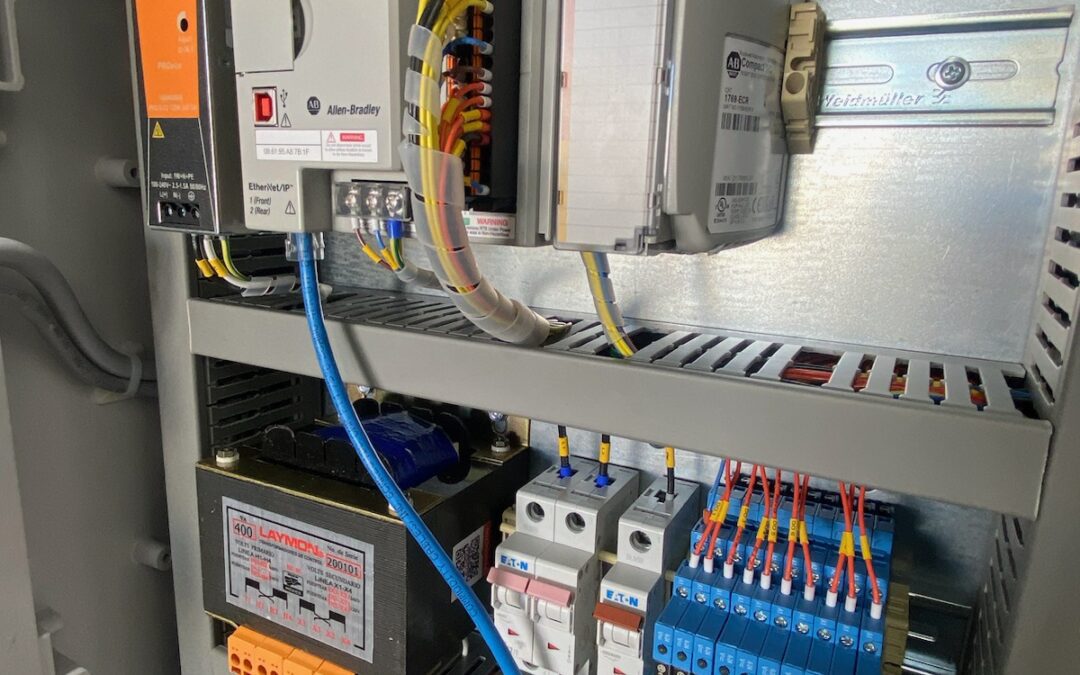Automation Basics
Automation enables the modern world to run efficiently. The use of computers called programmable logic controllers (PLCs) allows industrial systems to operate efficiently and safely with minimal human intervention. Understanding the basics of automation is the first step to knowing how to work on and implement these systems.
What is a PLC?
A PLC is a type of computer used in industrial automation systems to control processes and machinery. It is a versatile and reliable device that can be used in a variety of applications, from simple on/off control to complex process control.
PLCs are made up of several components including:
- Processor
- Input/output (I/O) modules
- Memory
The processor is the “brain” of the PLC and is responsible for executing the program that controls the system. The I/O modules allow the PLC to interact with sensors and actuators in the system, and the memory stores the program and any data that the PLC needs to access.
One of the main advantages of PLCs is their flexibility. They can be easily reprogrammed to control different processes or machinery, which makes them ideal for use in a variety of industries, including manufacturing, power generation, oil and gas, and water treatment.
PLCs are also very reliable and can operate for long periods of time without needing maintenance. They are designed to withstand harsh industrial environments and are equipped with features such as EMI/RFI filtering and surge protection to ensure their proper operation.
PLCs are an essential component of industrial automation systems and play a crucial role in the control and automation of processes and machinery.
How PLCs Work
To control a process or machinery, the PLC constantly monitors the input signals from sensors in the system and uses these signals to execute the control logic in its program. The control logic may include instructions to turn on or off certain actuators, such as motors or valves, or to adjust the operation of the system in some other way. The PLC can also send output signals to other devices in the system, such as displays or alarms, to provide information or to alert the operator to any issues.
PLC Programming
PLCs are only useful if they have control logic that they can follow. Without control logic, PLCs would not know when to turn components on and off or adjust the speed of other components.
PLCs are typically programmed using a specialized software program, which allows the user to create a logical flowchart or ladder diagram that represents the control logic for the system. The program is then downloaded to the PLC, where it is executed to control the process or machinery.
PLC programming languages are typically based on graphical representations of logical statements, such as ladder diagrams or function block diagrams. These languages are designed to be easy to understand and use, even for people who are not familiar with traditional programming languages like C or Java.
PLC programming requires a good understanding of the process or machinery being controlled, as well as the control logic needed to maintain the desired operation of the system. It also requires a good understanding of the PLC hardware and its capabilities, as well as any external devices that may be connected to the system.
PLC programming is an important skill in the field of industrial automation, as it allows engineers and technicians to create and maintain the programs that control processes and machinery. It is a critical part of the design and maintenance of automated systems, and is essential for ensuring the smooth operation and reliability of these systems.
Set Up Parameters
PLC set up parameters are the settings and configurations that are used to define the behavior of a Programmable Logic Controller. These parameters are used to configure the PLC to meet the specific needs of the application, and they can affect a wide range of aspects of the PLC’s operation, including its input and output (I/O) behavior, communication settings, and timer and counter functions.
PLC set up parameters are typically set using a software program that is specific to the PLC model being used. This program may be a standalone application or it may be part of a larger software suite that is used to design and program the automation system.
There are many different PLC set up parameters that can be configured, depending on the specific needs of the application. Some common examples include:
- Input/output (I/O) configuration: This includes settings such as the type of I/O modules that are being used, the type of signals that are being sent or received, and the specific I/O points that are being used.
- Communication settings: This includes settings such as the type of communication protocol that is being used, the baud rate, and any network settings that are needed.
- Timer and counter functions: This includes settings such as the type of timer or counter that is being used, the time base, and any special features that are enabled.
It is important to carefully configure the PLC set up parameters to ensure that the PLC is set up correctly and can operate as intended. Incorrectly configured parameters can lead to issues with the PLC’s operation ranging from communication errors to the entire system being unable to operate.
PLC Automation – Unmatched Efficiency
PLCs bring many benefits to control processes and machinery. Understanding the basics of PLC automation is the first step to unlocking these benefits. Increased efficiency, improved reliability, enhanced safety, and increased flexibility of industrial systems are all possible through PLC automation.

